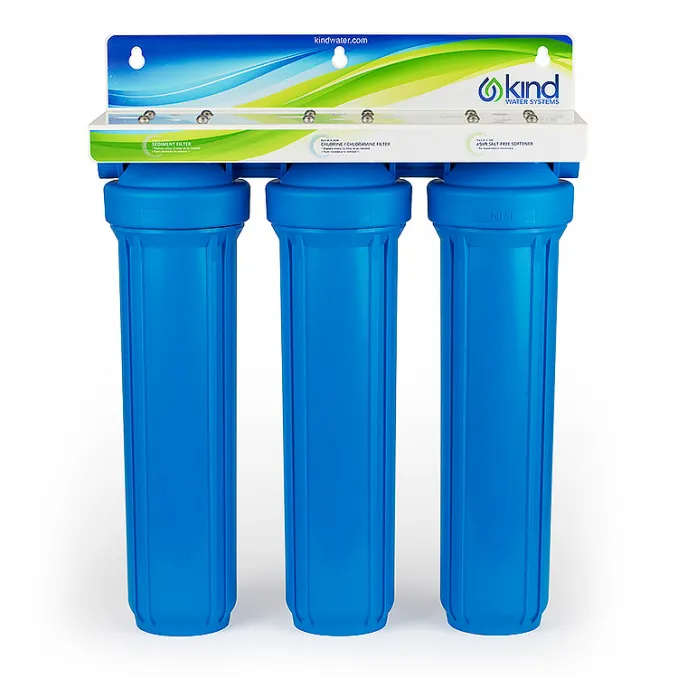
Are you curious about why water hardness varies from one area to another? From taste discrepancies to stubborn residue, understanding the factors affecting water hardness can provide insightful answers. In this blog post, we will explore how natural sources and human activities impact mineral content in H2O. Discover why testing for water hardness is crucial and learn practical solutions to improve your overall water quality by zip code. Join us on this journey as we uncover a hidden aspect of everyday life that influences our plumbing systems, appliances, health, and even the environment! Read more to unlock the secrets of water hardness by zip code.

Content
Natural Sources of Water Hardness
Water hardness can vary greatly depending on the geographical location. One of the primary factors influencing water hardness is the geology and soil composition in a particular area. Let’s explore how these natural sources contribute to variations in water hardness levels.
Influence of Geology and Soil Composition
The geological makeup of an area plays a significant role in determining water hardness. When rainwater falls, it percolates through layers of rock and soil, absorbing minerals along the way. The types and amount of minerals present in these geological formations directly impact the mineral content found in water sources.
Presence of Limestone, Gypsum, or Dolomite Deposits
Limestone, gypsum, and dolomite are common examples of minerals that contribute to water hardness. These deposits contain high concentrations of calcium and magnesium ions—two key elements responsible for making water hard.
When groundwater passes through limestone formations, it dissolves some calcium carbonate (CaCO3) from the rocks. This leads to an increase in calcium ions present in the water supply. Similarly, gypsum (calcium sulfate) or dolomite (magnesium-calcium carbonate) deposits can also release their respective ions into nearby bodies of water.
As a result, areas with substantial limestone, gypsum, or dolomite deposits tend to have harder water compared to regions lacking such geological features.
Understanding these natural sources helps us comprehend why certain areas may experience more pronounced effects related to hard water issues than others. By recognizing this influence on our local watersheds’ mineral content, we can take appropriate measures to address any challenges associated with elevated levels of water hardness.
Human Activities Impacting Water Hardness
Human activities can significantly contribute to changes in water hardness levels. Let’s explore how various industrial, residential, and agricultural practices affect the mineral content of our water sources.
1) Industrial Processes
Mining operations play a crucial role in shaping local groundwater quality. During mining activities, minerals are often exposed or released into the surrounding environment. As rainwater infiltrates these areas, it picks up these minerals and carries them into nearby water bodies. This can lead to an increase in water hardness due to the presence of additional dissolved minerals.
Additionally, certain manufacturing processes release chemicals that alter water chemistry. These chemicals may interact with existing minerals in the water or introduce new substances that affect its hardness level. Industries must be mindful of their wastewater management systems to minimize negative impacts on overall water quality.
2) Residential Influences
In our homes, we unknowingly contribute to variations in water hardness through everyday activities. Household cleaning products containing phosphates can increase mineral concentration when washed down drains and enter local wastewater treatment systems or natural bodies of water.
Moreover, using hard-water detergents for laundry and dishwashing purposes can produce unsatisfactory results due to the interaction between soap molecules and mineral ions present in hard water. It not only affects cleanliness but also causes residue buildup on clothing and dishes over time.
3) Agricultural Practices
Agricultural practices also have a significant impact on regional water hardness levels. The use of fertilizers promotes nutrient runoff into nearby bodies of water when excess fertilizers are applied or heavy rainfall occurs. This runoff introduces additional nutrients such as calcium and magnesium into aquatic ecosystems, potentially increasing overall water hardness.
Furthermore, irrigation methods employed by farmers can cause increased salinity levels in both soil and groundwater over time if not managed carefully. Salts dissolved from fertilizers or naturally occurring salts accumulate when excessive irrigation leads to inadequate drainage—resulting in higher concentrations of dissolved minerals affecting water hardness.
Impacts & Consequences of Water Hardness
Water hardness can have various impacts and consequences on our daily lives, plumbing systems, appliances, health, and the environment. Let’s explore these effects in more detail.
1) Plumbing Systems
Hard water contains dissolved minerals that can accumulate as scale buildup inside pipes over time. This scale reduces the flow rate of water through the pipes, leading to decreased efficiency in plumbing systems. Additionally, clogged pipes may require costly repairs or replacement if left unaddressed.
2) Appliances & Fixtures
Mineral deposits from hard water can negatively affect the performance and lifespan of appliances such as dishwashers, washing machines, coffee makers, and kettles. The buildup of minerals on heating elements or within internal components decreases their efficiency and effectiveness. Similarly, fixtures like faucets and showerheads can experience reduced water flow due to mineral blockages.
3) Health Considerations
While drinking hard water is generally safe for consumption, some studies suggest a potential link between hard water consumption and cardiovascular health issues. High levels of calcium and magnesium ions present in hard water might contribute to an increased risk of certain cardiovascular conditions. However, further research is needed to establish conclusive evidence regarding this relationship.
4) Environmental Effects
Excessive minerals from hard water can impact aquatic ecosystems when they enter natural bodies of water through runoff or wastewater discharge. Changes in pH levels caused by elevated mineral content may disrupt aquatic flora and fauna populations. These alterations could potentially harm sensitive species while favoring others adapted to higher mineral concentrations.
Conclusion
In conclusion, understanding the factors affecting water hardness is crucial for maintaining optimal water quality. From natural sources like geology and soil composition to human activities such as industrial processes, residential influences, and agricultural practices—each plays a role in shaping the mineral content of our water. By being aware of these factors and their impacts on plumbing systems, appliances, health, and the environment, we can take necessary steps to address any challenges related to water hardness. Let’s strive towards achieving a balance that ensures clean and healthy water for all!

Maria Thompson is a health blogger who enjoys writing on her website. Maria has always had an interest in medicine, and she hopes to become a doctor one day. She loves reading about medical discoveries, especially when they are for rare conditions that don’t have much research yet. She also likes exploring the science behind different diets and nutrition programs.









